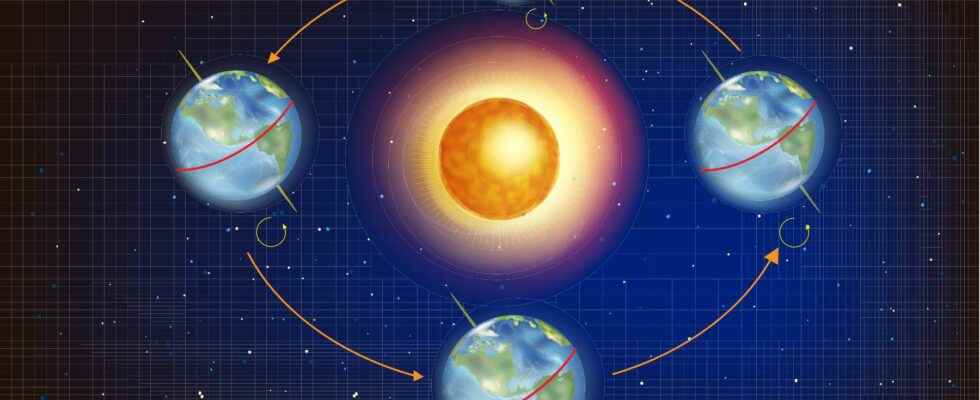Aphelion (from the Greek apofar, and helios, sun) constitutes the point where a planet is at the greatest distance from the Sun. Indeed, in the case of the Earth, the orbit is not a perfect circle but an ellipse varying between a minimum, named perihelionand a maximum, called aphelion, the sun occupying the foyer of the ellipse (for the other star systemsare used the terms of perigee and apogee). When it is at aphelion, the Earth is thus distant from the sun by approximately 1.017 astronomical units (i.e. approximately 152 million kilometers), and when it is at perihelion, it is 0.983 AU away (about 147 million kilometers). There is therefore a difference of 5 million kilometers between these two extremes. The aphelion also corresponds to the moment when the angular speed of the Earth is the slowest, by virtue of the law of areas.
Why does the date of aphelion vary over time?
Aphelion occurs between July 3 and 5, and perihelion around January 5. The date and time of these points vary over time, due to several phenomena, as explained Paris Observatory on his site. The aphelion is indeed calculated with respect to the Earth-Moon barycenter, itself in rotation around the center of gravity of the Sun. Moreover, the orbit of the Earth-Moon barycenter is not Keplerian but undergoes the influence of the other planets of the solar system. At the end, the time separating two consecutive passages through aphelion (called an anomalistic revolution) is not exactly 365 days but 365.25964 days, i.e. 14 minutes longer than thetropical year (time taken by the Earth to travel its orbit between two spring equinoxes). We therefore observe a progressive shift in the date of aphelion which advances in the year. Towards the end of the millennium, the dates of passage to aphelion will thus evolve between 20 and 23 July. Every 10,500 years (half period of the precession climatic), the aphelion passes from summer towinter.
Aphelion and the duration of the seasons
Contrary to what one might think, the Earth-Sun distance has little influence on the seasons : it is mainly the inclination of the axis of rotation of the Earth which influences the fact that it is warmer in thenorthern hemisphere in summer and vice versa in winter. On the other hand, the modification of the date of aphelion influences the length of the seasons since the Earth rotates less quickly as it passes the point of aphelion. Thanks to this, we currently enjoy longer summers and shorter winters.
You will also be interested
[EN VIDÉO] Kézako: do you know where the seasons come from? Each year has four seasons. In the northern hemisphere it is likely to be hot in summer and cold in winter. But where do these cyclical variations in temperature come from? Unisciel and the University of Lille 1 reveal to us, with the Kézako program, the secrets of the terrestrial seasons.
Interested in what you just read?
